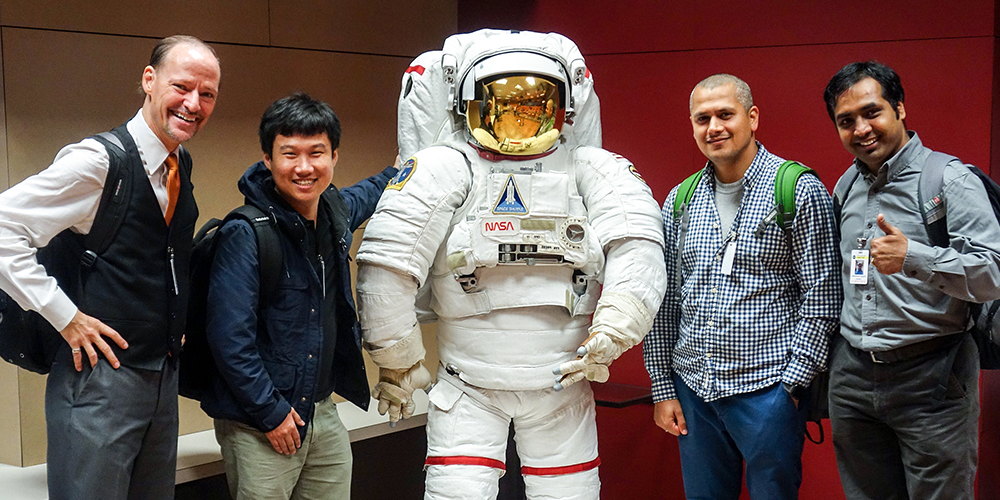Practically every word uttered by an astronaut during the historic moon missions was recorded by NASA. UTD researchers now are ensuring that the recordings, stored for decades on outdated analog tapes, are available to the public.
Communications between astronauts, mission control specialists and backroom support staff had been taped during the missions. Among the most well-known transmissions are Neil Armstrong’s quotes from Apollo 11 in July 1969.
In 2012, researchers in the Erik Jonsson School of Engineering and Computer Science received a National Science Foundation grant to develop speech-processing techniques to reconstruct and transform the massive archive of audio into Explore Apollo, a website that provides public access to the materials. The project, in collaboration with the University of Maryland, included audio from all Apollo 11 and most of the Apollo 13, Apollo 1 and Gemini 8 missions.
Researchers with the Jonsson School’s Center for Robust Speech Systems (CRSS) discovered that the first thing needed was to digitize the audio.
Transferring audio to a digital format proved to be an engineering feat itself. The only way to play the reels was on a 1960s piece of equipment called a SoundScriber at the Johnson Space Center in Houston.
SoundScriber could read only one track at a time. The user had to mechanically rotate a handle to move the tape read head from one track to another. CRSS founder and director Dr. John H.L. Hansen estimates that it would take at least 170 years to digitize the Apollo 11 mission audio using SoundScriber.
“We designed our own 30-track read head and built a parallel solution to capture all 30 tracks at one time,” said Hansen, the Distinguished Chair in Telecommunications. “This is the only solution.”
The new read head cut the digitization process from years to months. Once the audio was transferred from reels to digital files, researchers created software that could detect speech activity. They also tracked speaker characteristics to help researchers analyze how people react in tense situations.
“This is not something you can learn in a class.”
– Chengzhu Yu PhD’17
In addition, the tapes included audio from various channels that needed to be placed in chronological order.
One of the most challenging parts, according to the researchers, was figuring out how things worked at NASA during the missions so they could understand how to reconstruct the massive amount of audio.
“This is not something you can learn in a class,” Chengzhu Yu PhD’17 said.
Yu began his doctoral program at the start of the project and graduated last spring. Now, he works in Seattle as a research scientist focusing on speech recognition technology.
The team has demonstrated Explore Apollo, the interactive website, at the Perot Museum of Nature and Science. For Hansen, the project highlights the work of the many people involved in the lunar missions beyond the astronauts.
“The astronauts clearly deserve our praise and admiration,” he said. “However, the heroes behind the heroes represent the countless engineers, scientists and specialists who brought their STEM-based experience together collectively to ensure the success of the Apollo program.”
 From left: Dr. John H.L. Hansen, Chengzhu Yu PhD’17, Dr. Abhijeet Sangwan and Lakshmish Kaushik pose with a model of an astronaut at the Johnson Space Center in Houston.
From left: Dr. John H.L. Hansen, Chengzhu Yu PhD’17, Dr. Abhijeet Sangwan and Lakshmish Kaushik pose with a model of an astronaut at the Johnson Space Center in Houston.
 From left: Dr. John H.L. Hansen, Chengzhu Yu PhD’17, Dr. Abhijeet Sangwan and Lakshmish Kaushik pose with a model of an astronaut at the Johnson Space Center in Houston.
From left: Dr. John H.L. Hansen, Chengzhu Yu PhD’17, Dr. Abhijeet Sangwan and Lakshmish Kaushik pose with a model of an astronaut at the Johnson Space Center in Houston.